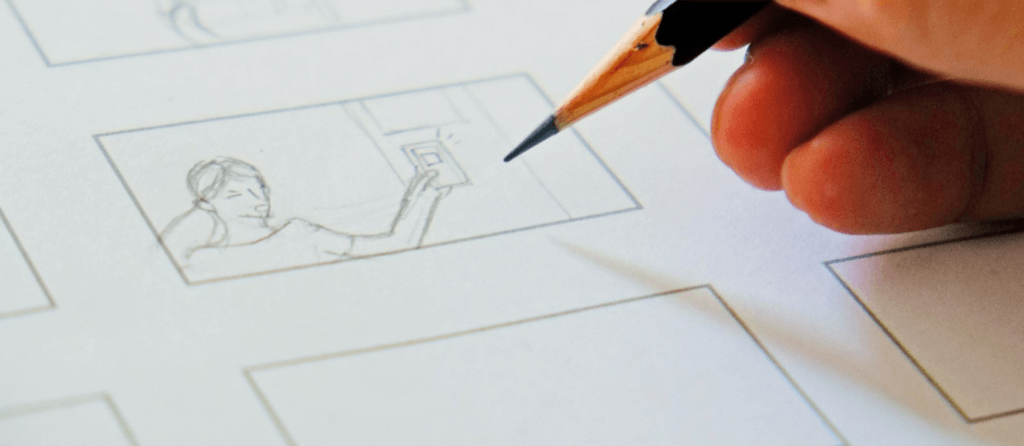The clock is ticking. The deadline is looming. Are you someone who cracks under the pressure, or is it your motivator?
Dialing up the heat and setting yourself a tough deadline could be the key to your next creative breakthrough.
Exploring the wide-open universe of infinite creativity might seem liberating. And it can be. But it also has its problems. For example, we can all imagine what happens when we’re faced with too many options – or even too much time.
Your creative production might be better approached through another lens: by intentionally adding limitations or constraints. But don’t worry, there’s a right way to work with constraints – without breaking a sweat.
The Power of Creative Constraints
Given that creativity is all about limitless imagination, deliberately using constraints to limit yourself might sound counterintuitive when it comes to the quality of creative output. After all, aren’t you meant to be thinking outside the box, not making it smaller?
To understand why constraints can be such a powerful tool, we should first define what that means. A creative constraint is any circumstance or condition that limits your creative options in some way. They can be external or self-imposed.
Any creative project you’ve ever worked on has involved constraints of some kind (whether you noticed them or not). A deadline, a brief, a format…
As a jumping-off point though, there is a three-pronged approach, according to recent research on the role constraints play in creativity and innovation.
Input Constraints
An input constraint is a limit placed on the resources that you put into a project.
This could be a limit on the materials you use. For instance, Swedish artist Anders Zorn painted with a limited palette of four colors. Children’s author Dr. Seuss famously set himself the challenge of only using 50 different words to write Green Eggs and Ham.
Alternatively, you can limit your time. Conceptual artist On Kawara was so wedded to the idea of completing his Date Paintings in a single day that he would destroy any that he didn’t finish on time.
Money, team resources, management or client direction – are all key considerations of course.
Process Constraints
A process constraint imposes a specific structure or procedure.
There are many frameworks out there that you can adapt. For instance, using the agile methodology to approach a project is a popular way of applying a process constraint.
Some creatives also let their process be dictated by their environment. Poets have written so-called metro or subway poems, where they add a line each time the train stops at a station. (Maybe don’t attempt the red-light constraint method while driving, though – safety first!)
Timelines, key dates, checkpoints, brainstorming sessions, and tool availability (such as collaborative proofing or creation) are further examples of process constraints.
Output Constraints
An output constraint is a particular condition the final product has to meet.
Think about set word counts for written projects. Writers like Terry Pratchett, Neil Gaiman, and Isaac Asimov have all written drabbles – stories of exactly 100 words.
Output constraints often apply when you’re asked to create a solution to a particular problem. For instance, a team led by Prof. Amos Winter was tasked with creating a prosthetic limb that was 90% cheaper to produce. To satisfy that budget constraint, they had to abandon accepted methods and knowledge, resulting in a revolutionary design.
Within a work context, formats, media, KPIs or objectives can all be output constraints.
The Benefits of Using Constraints
From helping you find a clear path forward to landing on previously elusive ideas, constraints can benefit your creative thinking in several ways.
Preventing Analysis Paralysis
Have you ever been faced with a creative problem and found your mind continually darting from one possible solution to another?
This abundance can result in analysis paralysis, where you get bogged down in trying to consider all possible options in detail. As therapist Vicki Botnick explains: “(The possible options) feel ever-expanding, endless, and all equally probable.”
While reminding yourself of the infinite nature of creativity can feel freeing, it can easily keep you from committing to an idea. Constraints cut back on possibilities but in the process direct your attention to a smaller, neater box for more efficient consideration.
Discovering New Options
In an attempt to swerve analysis paralysis, we often take refuge in habitual ways of thinking.
While these accustomed thought patterns are arguably constraints in themselves (as they limit your options), they tend to be unhelpful as they can lead you to gravitate towards the idea you feel most at home with, rather than actively pursuing more novel alternatives. Replacing your subconscious constraints with external ones can nudge your exploration in new directions.
The team of academics who developed the three-part model of constraints mentioned above explain it like this to The Harvard Business Review: “Constraints…provide focus and a creative challenge that motivates people to search for and connect information from different sources to generate novel ideas for new products, services, or business processes.”
Research has shown that scarcity encourages us to use what resources we do have in more original ways. When you block off the most obvious (and perhaps lazy) connections, your brain must stretch to find new, more obscure ones. These can be a rich source of original creative insight.
Applying Healthy Pressure
Using a constraint applies a healthy form of pressure which can boost your performance.
This is down to an effect known as the Yerkes–Dodson Law. This states that “a relationship between arousal and behavioral task performance exists, such that there is an optimal level of arousal for an optimal performance. Over- or under-arousal reduces task performance.”
If your task doesn’t contain stimulation or a challenge enough to get you started (and going), then it will impact how well you do. If you have no constraints, whether it’s unlimited time or resources, to complete a project, then you’re probably not feeling particularly pressured when you sit down to work on it.
A self-imposed constraint challenges and directs you in a controlled and safe way, meaning you’re more likely to find that sweet spot you need to do your best creative work.
Why Deadlines Simplify Creative Work
Deadlines are perhaps the most common constraint out there and they’re the easiest to use. They also come with some specific benefits you might not experience with other constraints.
Using a deadline can help make a complex creative task (like writing a book or designing a website) feel more manageable as you go. This is due to a concept known as goal gradients. A team of researchers led by academic professor Nira Liberman describe it like this: “As less of the task remains to be done, each unit of effort is perceived as more effective in that it closes a larger proportion of the gap to the goal.”
Deadlines can also help to curb scope creep and perfectionism. It’s tempting to keep working on a creative project indefinitely (adding, trimming, and changing) to try to get it closer to “perfection”. Limiting the time you spend forces you to embrace the idea that sometimes good is enough.

Exercises for Using Constraints Constructively
While there are huge advantages to using constraints, they are a double-edged sword. Impose too many or put yourself under too much pressure and you may burn out or harm your creativity.
Living in a constant state of stress will negatively impact your performance. After all, the Yerkes–Dodson Law does work both ways: being overstimulated is as harmful as being understimulated.
You’ve likely already worked with a creative brief, which is essentially a collection of constraints that the final product must work within. Embracing those requirements is key to creative success but you can also strategically add on the constraints to stimulate your creative thinking even further.
Here are some ideas for some gentle and fun constraints you can incorporate into your creative process.
Idea Generation
If you struggle with generating ideas, use a constraint that forces you to focus on quantity, not just quality. The more you do this, the more comfortable you’ll get with the divergent thinking required and the easier it will be to silence your inner critic.
- Generate as many ideas as you possibly can in a set period. This can be a fun brainstorming exercise to try with your team.
- Use the 30 Circles Challenge, where you aim to turn each circle into something recognizable within 3 minutes. Taking this idea further, imagine how many great accompanying captions or tag lines you can come up with in 3 minutes.
- Try “Forced Connections” where you take two objects and try to list as many connections between them as you can.
Play With Words
Words and letters lend themselves so well to constraints that “constrained writing” has become a literary style in itself.
- Write a lipogram, a piece of writing where you intentionally avoid using a certain letter or letters. Georges Perec famously wrote an entire novel without using the letter E.
- Try writing something only using words that have 5 letters or fewer.
- Use a restricted word count. See just how short you can make something while still achieving your aims.
Limit Time
Time constraints are some of the easiest and most accessible constraint methods available as all you need is a way of tracking your time. And, of course, they’re the ones we face daily at work.
- Break the project down into stages and set a deadline for each. Academic Dan Ariely found that students who did this performed better at tasks than students with one final deadline.
- Use timeboxing. This forces you to set a hard limit on how long you’ll spend on a particular project.
There’s Freedom in Constraint
While there is some truth to the idea that creativity suffers when you’re facing too many restrictions, creative constraints show how valuable limitations can be when you apply them strategically.
Constraints can help you think in new and valuable ways. They can also shift your perspective on a project, making it more approachable and manageable.
The right kind of constraints will help you unlock fresh ideas, overcome analysis paralysis, and get things done.





